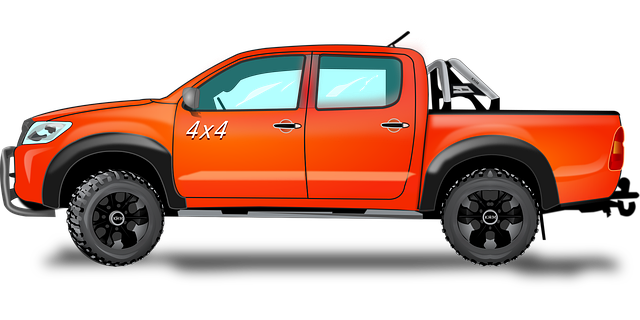ABS (Anti-lock Braking System) sensors are critical for off-road safety and performance, preventing wheel lockup during hard braking or challenging terrains. McAllen-Overland 4×4 accessories incorporate advanced ABS sensor upgrades to enhance control and traction. Regular maintenance, recommended by experts, ensures optimal sensor condition, improving safety and handling for off-road adventures.
“ABS sensors are vital components in modern vehicles, particularly in off-road enthusiasts’ favorite, the McAllen-Overland 4×4 accessories. This article offers a comprehensive guide to understanding these sensors and their role in enhancing your 4×4 driving experience. From basic overview to maintenance tips, we explore how ABS sensors work, their types, and why they’re essential for safe, efficient driving off-road. Discover the importance of these sensors in keeping your McAllen-Overland 4×4 accessories running smoothly.”
- Understanding ABS Sensors: A Basic Overview
- The Role of ABS Sensors in McAllen-Overland 4×4 Accessories
- Types and Functionality of ABS Sensors
- Maintenance and Troubleshooting Tips for ABS Sensors in Your 4×4 Vehicle
Understanding ABS Sensors: A Basic Overview

ABS sensors, or Anti-Lock Braking System sensors, are critical components in modern vehicles, designed to enhance safety and optimize braking performance. These sensors monitor wheel speed, providing real-time data to the ABS system. By detecting if a wheel is locking up during emergency stops, they enable the system to pump brakes individually, preventing skidding and maintaining vehicle control. This technology, essential for safe driving, is especially valuable in challenging conditions like muck, mud, or snow, where traditional braking systems might struggle.
When it comes to 4×4 vehicles, ABS sensors play an even more crucial role due to their enhanced off-road capabilities. MCallen-Overland 4×4 accessories often include advanced ABS sensor upgrades to cater to the unique demands of off-road enthusiasts. These sensors ensure that drivers can navigate treacherous terrain with confidence, knowing their vehicle’s braking system is up to the task.
The Role of ABS Sensors in McAllen-Overland 4×4 Accessories

ABS (Anti-lock Braking System) sensors play a crucial role in enhancing safety and performance for McAllen-Overland 4×4 accessories enthusiasts. These sensors are an integral part of modern vehicle braking systems, designed to prevent wheels from locking up during hard braking or when driving on challenging terrain. In the context of 4×4 vehicles, ABS sensors contribute significantly to off-road capabilities by ensuring better control and traction.
For McAllen-Overland 4×4 accessories, ABS sensors provide real-time data that helps drivers navigate through rough terrains safely. They enable advanced braking technologies, such as electronic distribution of brake force, which is particularly useful when traversing uneven surfaces or navigating sharp turns. This ensures that each wheel receives the optimal amount of braking power, preventing skidding and enhancing overall vehicle stability.
Types and Functionality of ABS Sensors

ABS (Anti-lock Braking System) sensors are critical components in modern vehicles, designed to enhance safety and performance, especially in challenging terrain like that tackled by McAllen-Overland 4×4 enthusiasts. These sensors come in various types, each playing a distinct role in the ABS system. The primary types include wheel speed sensors, which detect individual wheel rotation, and linear or hall effect sensors, that monitor fluid pressure within the brake calipers.
Wheel speed sensors are strategically placed on each wheel, transmitting data to the vehicle’s computer, which calculates the relative speeds of all wheels. If a wheel spins faster than others during braking, the ABS system intervenes to prevent locking, ensuring optimal traction and control. Linear or hall effect sensors, on the other hand, measure the pressure in the brake lines, allowing the system to precisely modulate brake application to individual wheels as needed. This ensures even braking force distribution, a feature particularly valuable for off-road adventures when navigating treacherous terrain with McAllen-Overland 4×4 accessories.
Maintenance and Troubleshooting Tips for ABS Sensors in Your 4×4 Vehicle

Regular maintenance is key to keeping your ABS sensors in top condition, ensuring optimal performance when venturing off-road with your 4×4. At McAllen Overland 4×4-accessories, we recommend a few simple steps. First, check for any visible damage or debris around the sensor, as even small objects can disrupt its operation. Clean the area thoroughly and ensure no contaminants remain. Over time, these sensors can accumulate dust and grime, so periodic cleaning is essential. Additionally, inspect the sensor’s connections; loose or corroded wires should be tightened or replaced promptly.
When troubleshooting issues, keep an eye out for warning lights on your dashboard. A flashing ABS light indicates a potential problem. Start by verifying the power supply and ground connections, ensuring they are secure and free from damage. If issues persist, consult a professional to diagnose more complex problems. Remember, well-maintained ABS sensors contribute to enhanced safety and better control during challenging 4×4 terrain adventures, so don’t overlook these regular maintenance tasks recommended by McAllen Overland 4×4-accessories experts.
ABS sensors play a critical role in enhancing safety while driving, particularly off-road or in challenging terrain. As essential components of McAllen-Overland 4×4 accessories, these sensors enable precise control and distribution of brake power, ensuring optimal performance during rough conditions. Understanding their functionality, types, and maintenance is crucial for vehicle owners to fully leverage the capabilities of their 4×4 systems, making every drive safer and more secure.



